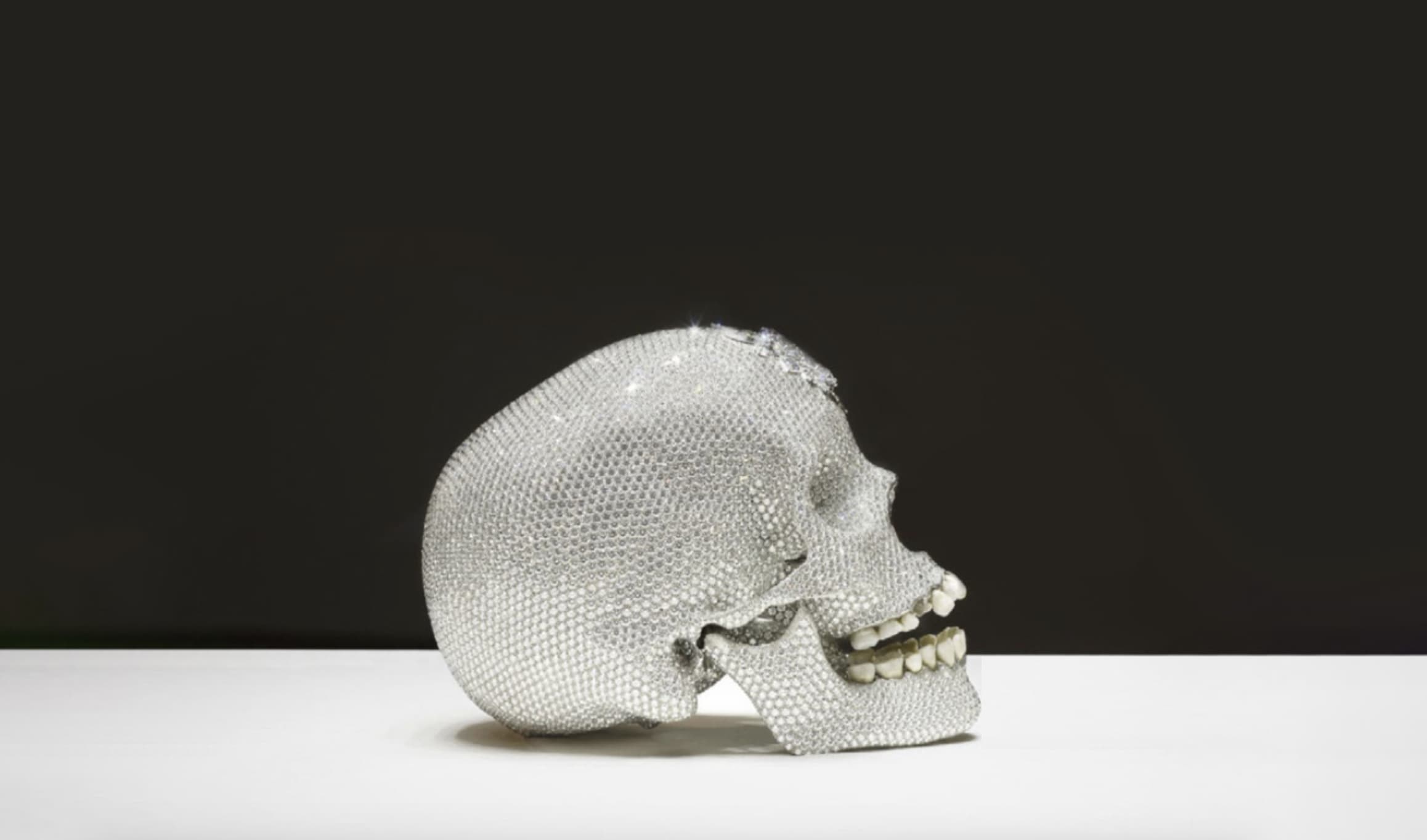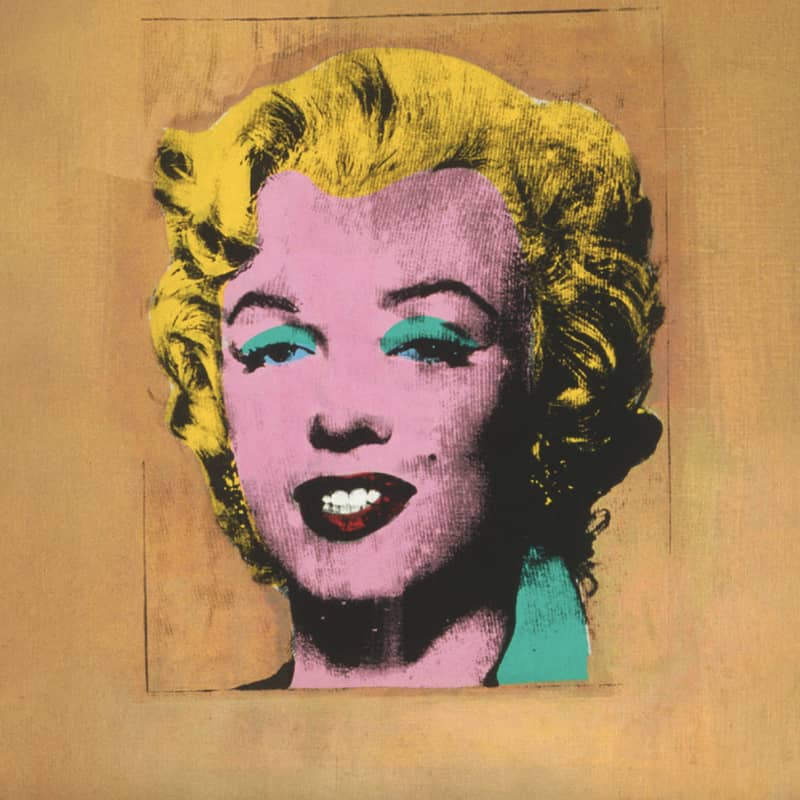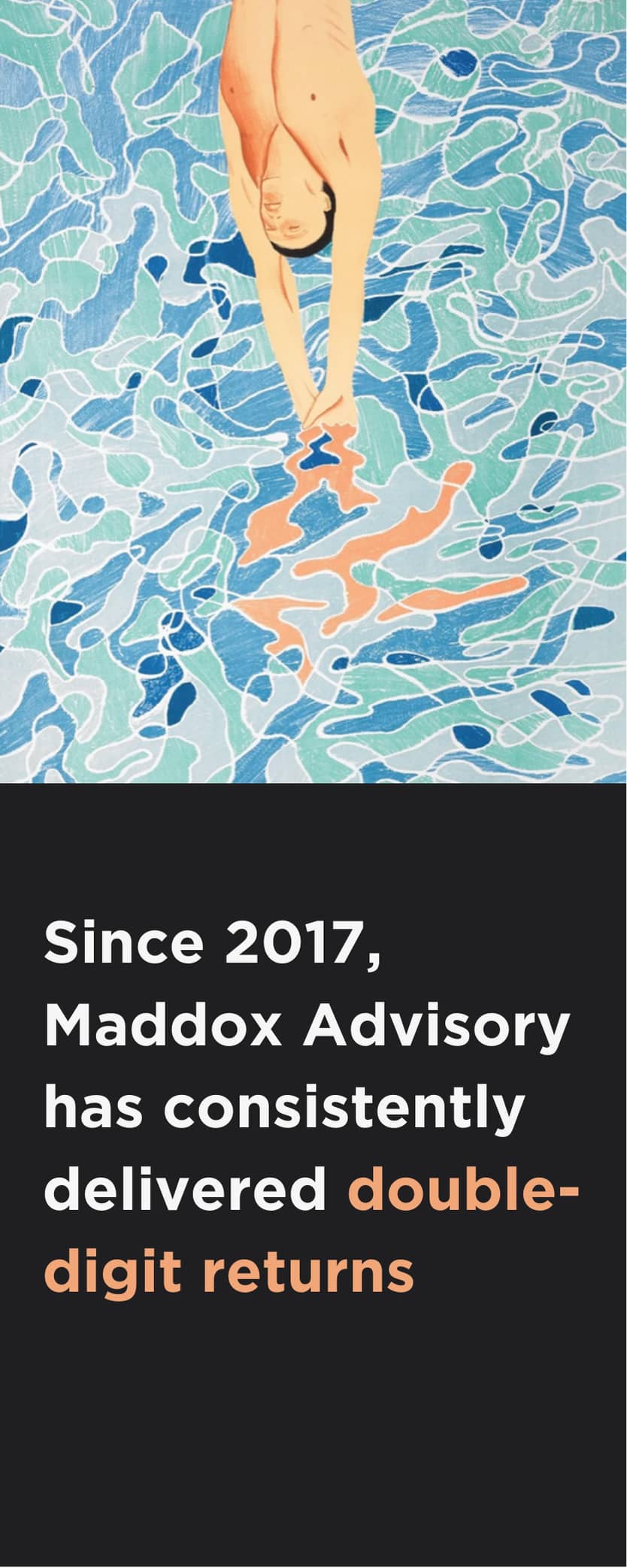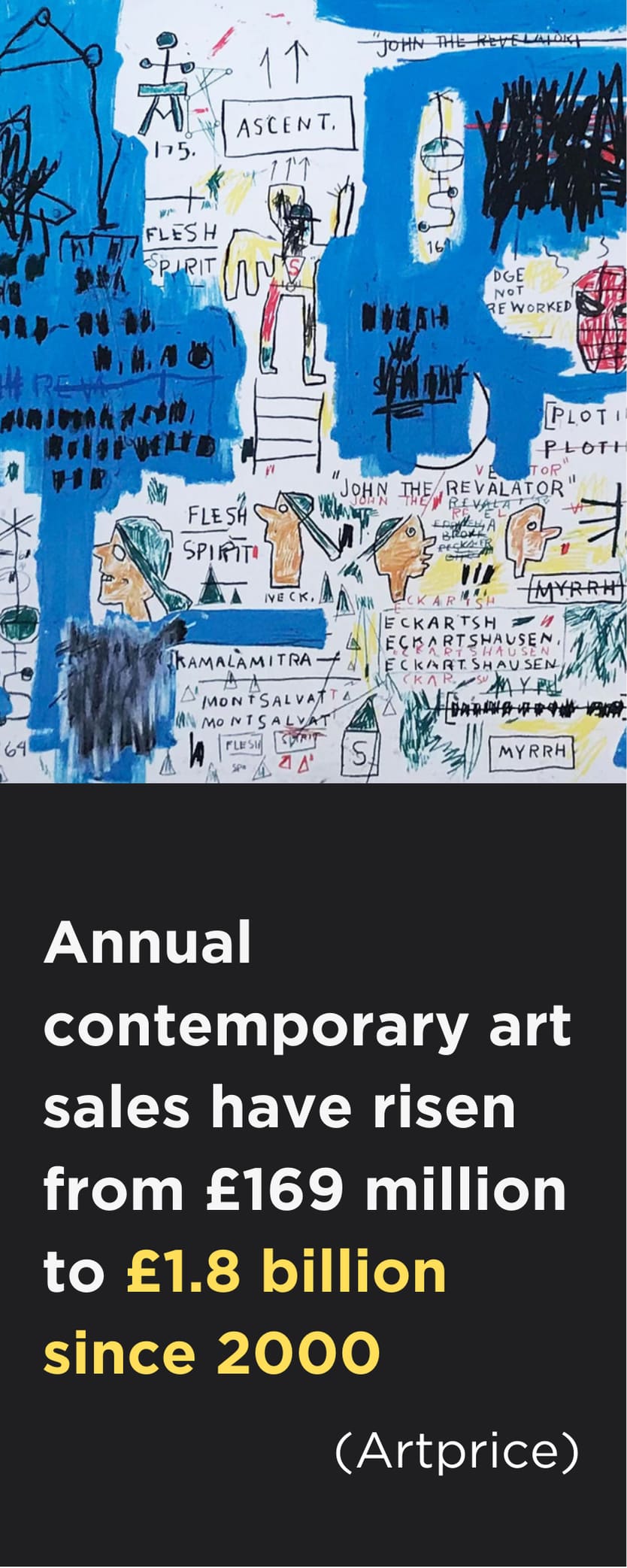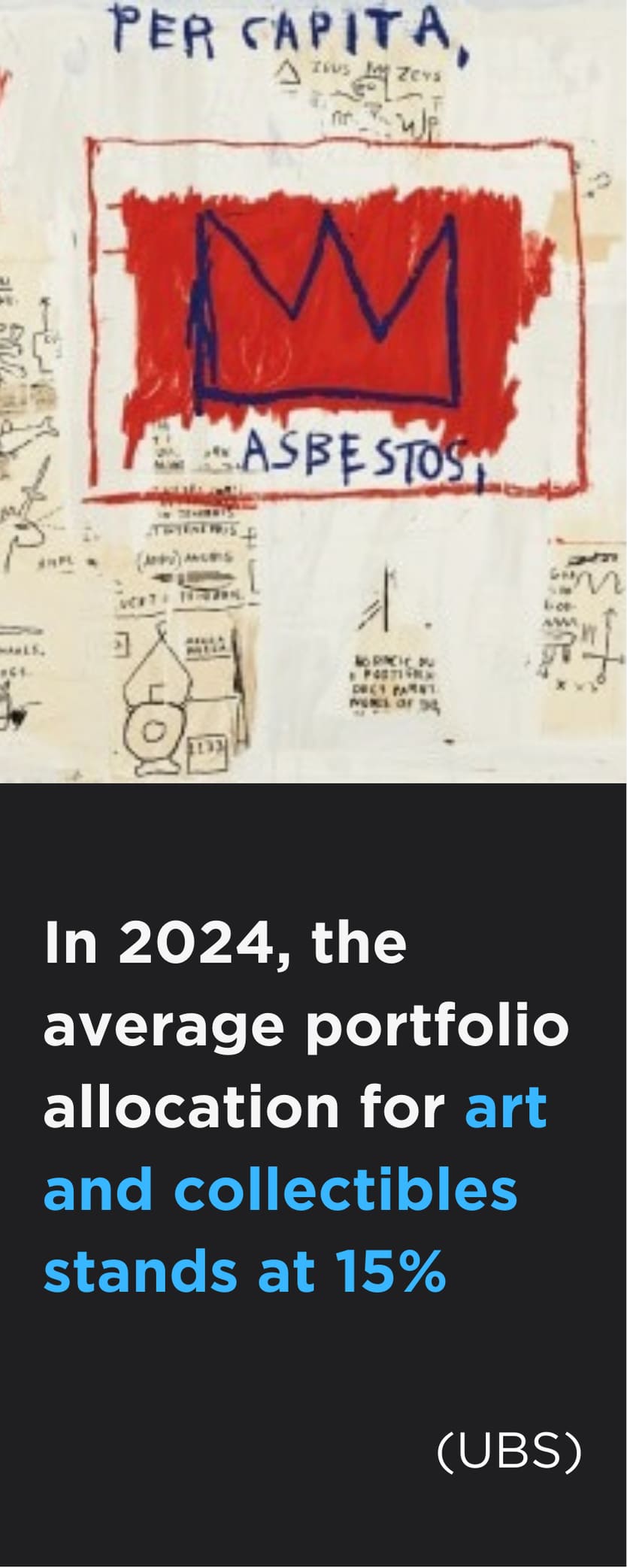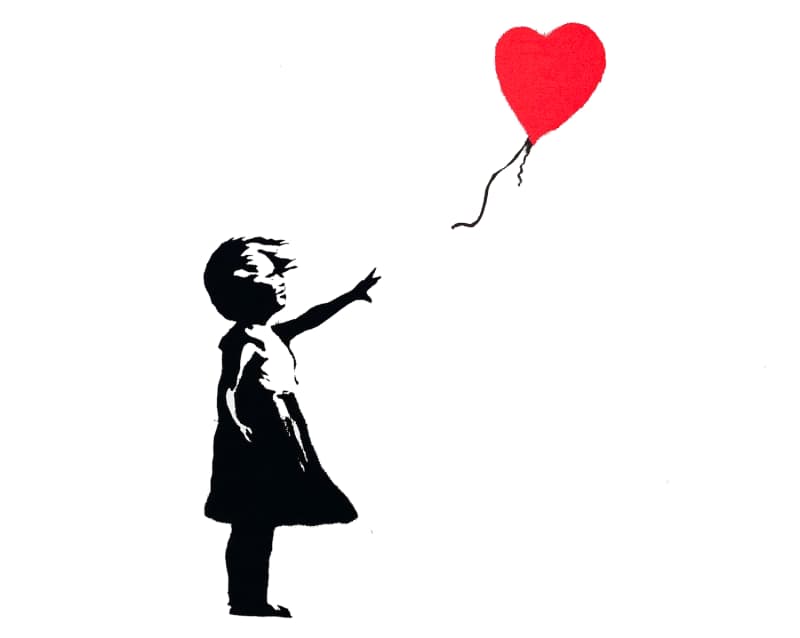Art and diamonds are both coveted as symbols of wealth, but which is the true gem for investment potential? In the fifth article in our Art vs Alternative Investment series, we explore Art vs Diamond investment. Discover which passion asset stands out for its rarity, resilience and enduring value, and why discerning investors are choosing fine art as a crown jewel in their portfolios.
Introduction: Why Invest in Diamonds and Art—The Allure of Passion Investments
In the fifth instalment of our Art vs Alternative Investment series, we delve into two great symbols of wealth and prestige—art and diamonds—to find out which is the true gem in terms of investment potential.
Alternative assets, often referred to as a passion investment, represent a growing segment in the investment landscape. While not new, their prominence has surged in recent years as investors seek diversification and personal satisfaction alongside financial returns.
Investment quality diamonds exude elegance, rarity and symbolism, making them a cornerstone of the luxury market. Art, meanwhile, holds a different kind of prestige that goes beyond its material value, embodying history, culture and the creative genius of their makers. Both assets are valued for their intrinsic beauty and reputation as status symbols. As tangible stores of value that can be passed down through generations, they are also uniquely appealing as alternatives to investing in the stock market.
With global markets facing ongoing uncertainty, investors are increasingly turning to alternative investments to diversify their portfolios. But which asset class offers greater financial security, long-term appreciation and liquidity, art vs diamond investment? Join us as we explore the rarity, resilience and enduring value of each.
1. Investing in Diamonds: Pros & Cons
If you’re reading this, you’ve likely asked yourself the question, why invest in diamonds? To find out the answer, a careful analysis of investing in diamonds pros and cons is essential.
Damien Hirst, For the Love of God (2007)
The Benefits of Investing in Diamonds
Diamonds are among the most portable forms of wealth, prized for their ability to condense their value into a remarkably small and durable package. Their compact size and physical resilience make them easy to conceal, whether tucked in a pocket, set within a piece of jewellery or stored in a safety deposit box. Unlike many other asset classes, diamond investment offers unparalleled convenience in terms of storage and transportation. The portability of diamonds ensures that they remain a reliable store of value, even in times of economic uncertainty or market volatility.
Universally recognised as a luxury asset, diamonds have enjoyed consistent demand through the years and across cultures, particularly in the jewellery and wedding markets. The finest examples are breathtaking to look at and wear. Owning a rare and exquisite diamond can be a deeply gratifying experience. It’s not just about the sparkle; it’s about possessing something beautiful and enduring, a tangible piece of Earth’s history.
There is also an emotional dimension to the market value of diamonds, one that transcends their physical properties and taps into human sentiment. For centuries, diamonds have been imbued with symbolism, representing love, commitment and relationship milestones. This association is not just a product of marketing campaigns but a deeply ingrained cultural narrative, woven into traditions and rituals worldwide, ensuring the ongoing desirability of diamonds.
The Challenges of Diamond Investment
One of the most important considerations for any investor is: do diamonds appreciate in value? Not currently is the answer. Diamond investment value refers to a natural diamond’s potential to appreciate or depreciate in price over time. Since 2019, diamonds have experienced a slight decline in value, dropping by 1%. Impacting the demand for natural diamonds are factors such as the increased availability of synthetic diamonds and shifting luxury preferences. This demonstrates the importance of not relying on a single asset category, like diamonds, in your investment portfolio.
Diamonds currently face ethical challenges and growing competition from lab-grown diamonds—the number-one reason why diamonds are not a good investment right now. Similar in appearance to natural diamonds yet affordable, produced in weeks and with a lower environmental impact, the growing trend for synthetic diamonds is transforming the diamond industry, affecting both the perception and value of natural diamonds.
The market share for lab-grown stones rose from 9.3% in 2023 to more than 20% by the end of 2024, begging the question: do lab grown diamonds hold their value? The answer is now because their popularity is not the result of a collective desire to invest in lab grown diamonds. Rather, it is being driven by technological advancements and demand for ethical, sustainable options among younger, socially conscious buyers.
Another potential disadvantage of diamond investment is their depreciation after purchase. Unlike art, diamonds often lose value immediately after acquiring them due to significant retail markups. Price manipulation is another concern, with the diamond market dominated by just a few major players, including De Beers. In control of supply and pricing, they use artificial scarcity to create high demand and inflate value.
Finally, selling investment diamonds can be challenging as the resale market is notoriously opaque and lacks standardised structures. Unlike art and gold, which have easily tracked market values, a diamond’s value is based on a complex combination of carat weight, cut, clarity, colour and, increasingly, market trends.
For individual sellers, this often means navigating a confusing landscape where private buyers and jewellers dictate terms and frequently offer significantly less than the market value. As a result, many sellers find themselves with limited resale options and little leverage.
2. The Pros & Cons of Art Investment
Investing in art is often seen as a blend of financial strategy and personal passion, offering unique advantages that set it apart from traditional assets. However, like any investment, it is essential to weigh up the benefits and challenges before committing to the canvas.
Roy Lichtenstein, The Ring (Engagement) (1962)
The Benefits of Investing in Art
Fine art investment has long enjoyed a reputation as one of the top alternative investments. With its strong historical appreciation and robust long-term growth, since the year 2000, the Artprice100 index has consistently outperformed the Diamond Price Index. Blue chip art investment, in particular, has been performing especially well, with works by iconic artists often achieving record-breaking prices at auction.
The scarcity of art is an important driver of value. Unlike diamonds, the supply of which can be manipulated, fine art is inherently scarce. No more works will be created by the masters of the past, leading to long-term demand.
When it comes to selling your art, there are multiple resale channels, offering flexibility and a wide range of opportunities for sellers to connect with potential buyers. Private collectors often seek unique pieces to enhance their personal collections, while galleries can act as intermediaries, leveraging their networks and expertise to facilitate sales. Major auction houses like Sotheby’s and Christie’s, on the other hand, provide high-profile platforms that can attract competitive bidding and global attention.
Art holds an intrinsic value that transcends its monetary worth, serving as a tangible link to the cultural, historical and social contexts in which it was created. Each piece tells a story, offering insight into the artist's vision, the era's prevailing ideologies or significant historical events. This cultural resonance not only enhances the emotional and intellectual satisfaction of art investment but also contributes to the appeal and prestige of fine art ownership.
Finally, fine art has a proven track record of retaining or even appreciating in value over time, particularly during periods of economic uncertainty. As a tangible asset, it is less susceptible to market volatility, acting as a reliable hedge against inflation when traditional investments are faltering and a safeguard for long-term financial security.
The Challenges of Fine Art Investment
Like any asset class, art investment is not without its challenges, first and foremost the need for expert knowledge. Investing in art for beginners is not an easy process and can be very risky. Successful art investment requires an understanding of provenance, market trends and artist significance.
It is important that investors take into consideration storage and insurance costs when they invest in paintings or other works of art. The proper preservation of art accrues additional costs—for climate-controlled storage if you are not planning on hanging your art in your home, and comprehensive insurance.
Fine art investment also demands patience as significant appreciation usually takes years, if not decades. This illiquidity can be a drawback for investors seeking quicker returns or needing to access their capital in a hurry.
3. Comparative Analysis: Art vs Diamond Investment
Now we've explored the subject of are diamonds a good investment and examined the pitfalls and benefits of investing in art, let’s dig a little deeper into the factors influencing their respective performances by comparing the two passion assets side by side.
Market Performance: Which Passion Asset Delivers Stronger Returns?
How much do diamonds appreciate in value compared to fine art? The evidence is strongly in favour of the latter in terms of which delivers the strongest returns. Since the year 2000, the Artprice100 index has risen by 620% while the Diamond Price index has increased by just 9%. The historical data backs this up, revealing that fine art is outpacing diamonds for long-term value growth. For example, works by Jean-Michel Basquiat have appreciated by hundreds of percent, while diamonds have remained relatively stagnant.
Despite recent economic uncertainties, the art market continues to show remarkable resilience and growth, with blue chip art achieving consistent value appreciation over decades. In 2023, global art sales reached an estimated $65 billion, driven by increasing interest from ultra-high-net-worth individuals (UHNWIs). By contrast, diamonds faced diminishing returns, with market saturation and the rise of lab-grown alternatives chipping away at their investment appeal.
Liquidity & Resale Market: The True Test of Investment Strength
The art market offers diverse avenues for reselling pieces, from galleries and auction houses to private sales. This wide variety of resale options provides welcome flexibility for art investors. The same can’t be said for the diamond resale market, which lacks transparency, with sellers often being forced to accept losses due to limited buyer pools. This can have a significant impact on exit strategies, with art investors benefiting from multiple sales channels, while diamond owners face a constrained resale market.
Scarcity & Value Appreciation: The Rarity Factor
The subject of provenance adds a unique dimension to the investment potential of art. An artwork’s history and the reputation of its creator significantly influence its value and potential for long-term appreciation.
Compare this to diamonds, which, despite marketing claims, are not as rare as you might think. The myth of diamond scarcity is real, with industry-controlled prices undermining their credibility as a worthwhile investment.
Then there is fine art’s societal value. Art attracts collectors who are driven by passion and cultural appreciation, ensuring ongoing demand. Diamonds, however, are often treated as commodities, limiting their growth potential.
Inflation Hedge & Wealth Preservation: The Smartest Store of Value?
Fine art, particularly works by established and blue-chip artists, often rises to prominence in the face of inflation. When economic tides turn rough and traditional investments like stocks or bonds are underperforming, art—tangible and unbound from the whims of currency—can hold its ground, even appreciating in value. As inflation chips away at the purchasing power of money, the price of art often climbs, shielding investors from the storm and preserving their capital.
While prized for their beauty, diamonds dance to a more unpredictable tune. Their value is tethered to a tightly controlled supply chain, which can create artificial peaks and troughs in pricing. This volatility is further magnified by shifting consumer preferences—such as the rising popularity of lab-grown diamonds—and the broader shocks of geopolitical or economic upheaval. Unlike art, whose value can transcend markets, diamonds are at the mercy of forces that can send prices plunging.
Roy Lichtenstein, Diamond (1962) (RLCR 727)
Market Demand & Future Investment Outlook
In a world of economic unpredictability, investment-grade art has emerged as a powerful and tangible store of value, offering a sophisticated means to diversify portfolios while acting as a reliable hedge against inflation. Renowned artists' works, in particular, are regarded as stable assets, often holding their value or even appreciating significantly over time.
Collectors are drawn to the aesthetic power, cultural significance and historical significance of exceptional artworks. Owning a masterpiece delivers more than a valuable asset—it offers a profound sense of intellectual and emotional fulfillment.
Art acquisitions also carry an undeniable element of prestige. High-profile pieces signal status, sophistication and taste, enhancing a collector's reputation while unlocking access to exclusive circles within the art world. This blend of financial security, personal enrichment, and cultural cachet cements art's position as one of the most compelling investment opportunities today.
In stark contrast, the investment allure of natural diamonds is fading. The growing popularity of lab-grown alternatives, paired with ethical concerns over mining practices, has destabilised the market and eroded resale values. Once considered a timeless store of value, natural diamonds now face increasing uncertainty, with fluctuating demand and pricing casting doubt on their future as a reliable investment. Compared to the enduring appeal of fine art, diamonds are quickly losing their shine in the world of alternative assets.
Conclusion: Why Maddox Gallery Recommends Art Investment
The appeal of collecting lies in the deeply personal connection investors forge with their chosen assets. Whether it's the vibrant hues of a prized painting or the mesmerising brilliance of a diamond, these acquisitions resonate on a level beyond the financial. However, while passion fuels the initial spark, a prudent investment strategy requires aligning personal interests with clear financial goals and a realistic assessment of risk tolerance. Navigating the diverse landscape of alternative assets demands a balanced approach that acknowledges both the emotional pull and the potential for return.
When considering the merits of art vs diamond investment, art as an asset class has consistently demonstrated a stronger track record for long-term appreciation, market stability and resilience during economic downturns. It possesses an enduring quality and physical integrity that remains intact over time, with its value often appreciating as its historical and cultural significance deepens.
The enduring nature of art, coupled with the broad accessibility of the art market, positions fine art as a superior investment choice for long-term growth and diversification. Its intrinsic beauty and historical value are unparalleled, creating a compelling case for its inclusion in any well-rounded portfolio.
Explore other articles in the Alternative Investments series, including:
The Maddox Gallery Advantage
Maddox Gallery was founded to help clients overcome the challenges of fine art investment, such as authentication and identifying the artists with the highest potential for substantial returns. A global market leader in art market analysis, our goal is to assist investors in devising the most profitable and satisfying art investment strategies when navigating the multi-billion-dollar art industry.
Maddox Art Advisory is designed as a space to discover the joy of owning and collecting art, guided by expert advisors. With unrivalled access to the Contemporary art world, our bespoke services are carefully tailored according to your risk tolerance and return objectives, taking into consideration asset protection, capital preservation, diversification and your personal taste.
Experts in portfolio management, we are dedicated to sourcing the highest-quality investment art for our clients, with a certificate of authentication provided with every piece of art for sale. We also oversee the delivery of art to a client’s home or can arrange specialist storage in a temperature-controlled facility, depending on their preference.
To explore the advantages of Contemporary art investment, explore investment art for sale and begin or grow your art investment portfolio. Book your private consultation with a Maddox Gallery Art Advisor.
The value of investments can go down as well as up, and past performance is not guarantee of future performance. Return figures shown are gross; fees, including a 20% performance commission, may apply. Liquidity is not guaranteed. Terms, limitations, and withdrawal conditions apply. Minimum recommended investment is £20,000. Maddox Advisory is not FCA-regulated and does not give financial advice. Seek independent advice before investing.
